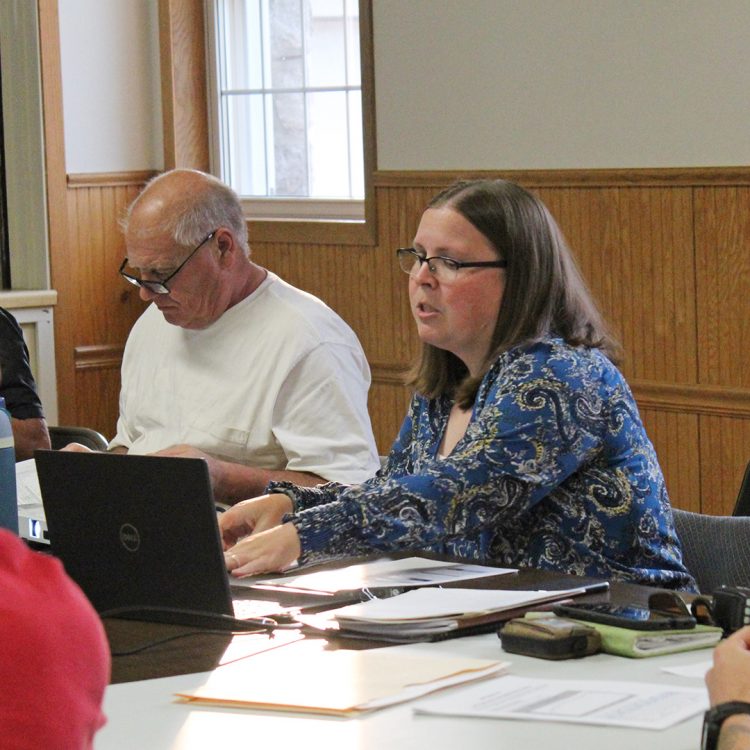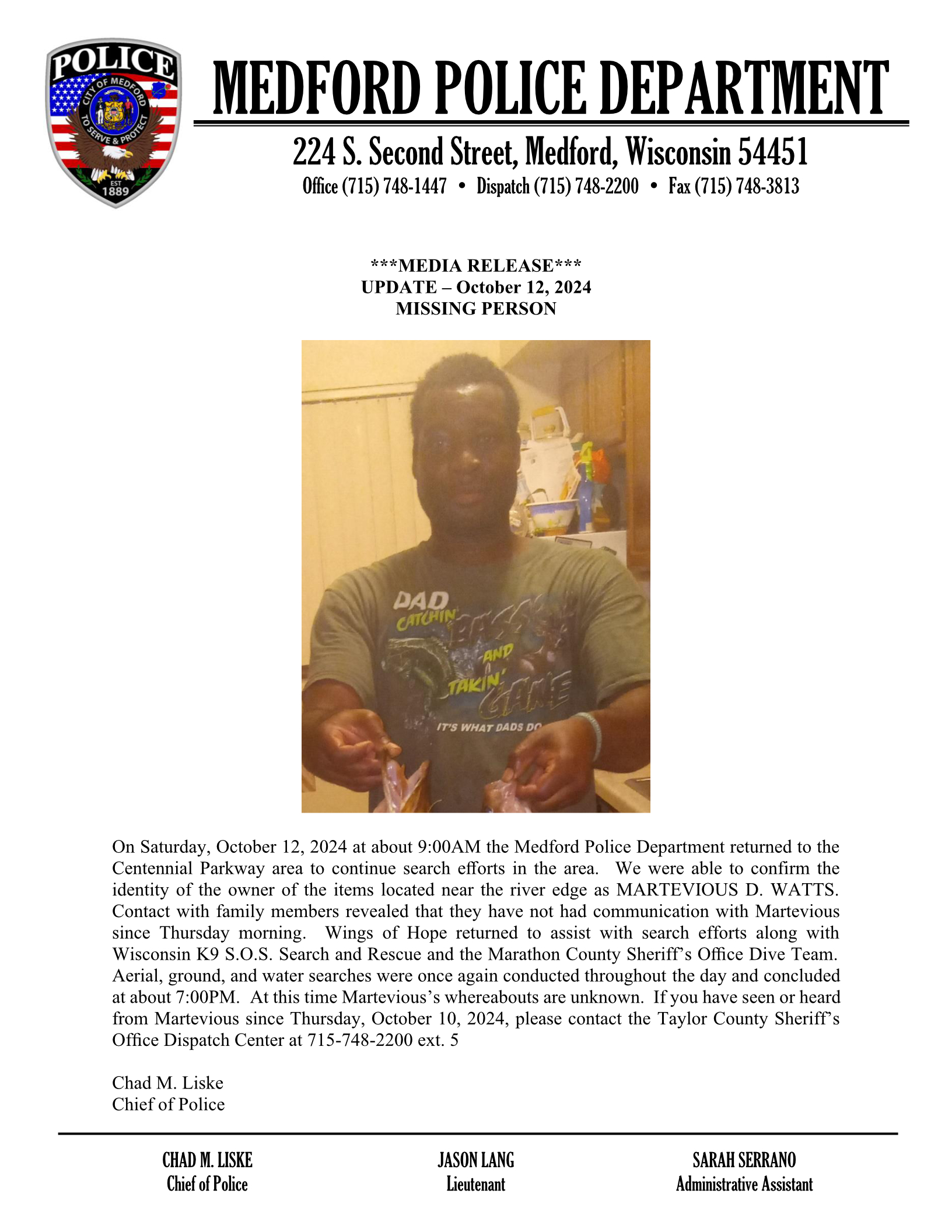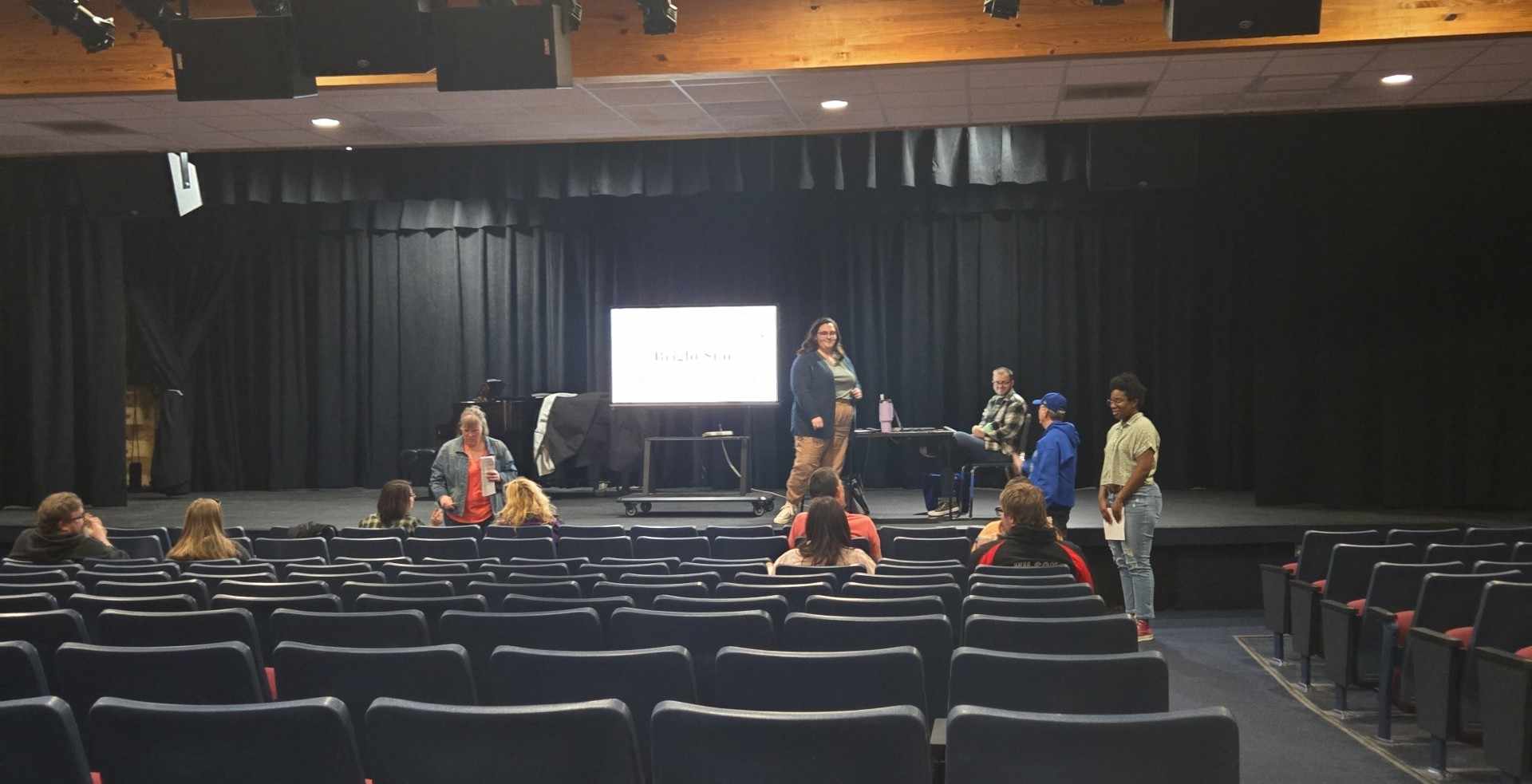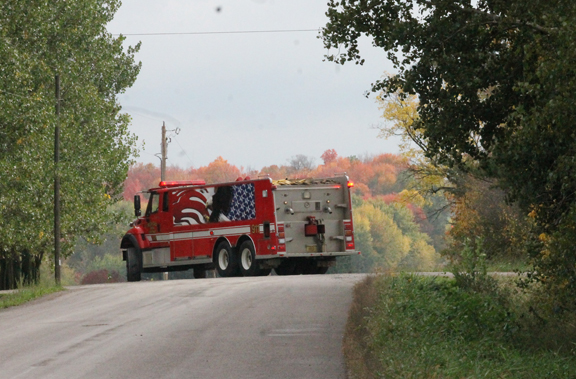Town of Lake Holcombe Comprehensive Plan Committee Meeting; Future housing needs and goals considered


Susan Badtke, senior planner with the West Central Wisconsin Regional Planning Commission, guided the Town of Lake Holcombe Comprehensive Plan Committee through results from a community survey, during a meeting July 24. She also asked the committee to identify what they think the top housing needs and goals of the town should be, which she will use to bring back housing goals and strategies at the next meeting. Photo by Julia Wolf
By Julia Wolf
The Town of Lake Holcombe Comprehensive Plan Committee met July 24, where they took a first look at the results of a community survey, and took time to discuss housing needs and goals, as part of the process to create a comprehensive plan for the town.
Susan Badtke, senior planner at the West Central Wisconsin Regional Planning Commission, shared data and guided the committee through the discussions for the evening. The comprehensive plan will cover where the town wants to be in the future, what the existing conditions are and what strategies can help the town attain their vision.
“You, as a planning committee, what do you want in 20 years?” asked Badtke. “What do you want the vision for the town to be? And maybe you want it to look the same. Maybe you want it to change.”
Badtke started by sharing data on community trends, with the data coming from the 2020 census, when it was available, and the American Community Survey. She says the American Community Survey is a sample survey, so for smaller communities like Lake Holcombe, there are larger margins of error. Badtke asked the committee to say something, if the data presented does not seem like it reflects the community accurately.
The trends showed population numbers and projections, the population age groups, the number and types of housing units in the town, and commuting data.
Badtke noted that the population in the town, and in the nation, is aging, with the median age rising.
“We’re aging and that’s not a bad thing,” said Badtke. “That just means we need to keep that in mind, as we’re talking about what are the needs of our residents.”
Committee chairperson Tom Rocque said he thought it was interesting that the 65 plus age group almost doubled. He questioned who would provide services, if the population is retirement age.
“Who’s going to work the ambulance?” asked Rocque. “Who’s going to work at the grocery store?”
Related, was the price of housing in the area. Rocque says he thinks Holcombe either needs to grow and have more middle class housing for the people working those jobs, or accept that there will be fewer amenities and services close by.
The committee put that thought on hold, as they turned their attention to the results of the community survey. Each committee member was given a full copy of the results.
“I’m going to hit on the highlights,” said Badtke. Badtke said they are not going to take too deep of a dive into any one topic, but said they will rotate through the main topics in future meetings.
The survey was mailed to 915 property owners and 388 surveys were returned, which is a 42 percent response rate, though Badtke noted not every person answered all of the questions.
The first section of the survey dealt with community and quality of life.
“Most folks are satisfied with the quality of life in the Town of Lake Holcombe,” said Badtke.
The top three reasons people shared they live or own property in the town, are recreational opportunities, small-town atmosphere and natural features. The three town programs and services marked the lowest by respondents, were police/ law enforcement services, high speed internet/broadband service and telecommunications services. The areas that saw higher satisfaction rates, with the majority rating them good, were fire protection/emergency services, street maintenance, parks and recreation, garbage/recycling, schools and the sanitary district.
The programs and services rated as most important were protecting lake water quality, ensuring public safety and protecting groundwater quality.
“Probably not surprising, those three things,” said Badtke. The results of the ag/natural/cultural resources section also aligned with those results, where they ranked the importance of planning and protecting those resources. Badtke says the strong majority of respondents found protecting groundwater, lakes, rivers and streams to be essential.
“Respondents are divided, regarding allowing new residential development,” said Badtke, during the housing section, with 6 percent strongly favoring allowing new residential development, 43 percent favoring, 26 percent who oppose and 12 percent strongly opposing.
The transportation section saw 62 percent agree, or strongly agree, that there should be more biking and walking along public roadways, and off-road biking and walking trails.
The results also showed that 72 percent agree, or strongly agree, that the town should designate certain roads as ATV routes. Badtke asked if all town roads are open for ATV routes. The committee members said yes, but county roads in the area are not. Badtke says it is possible that some of the respondents do not want all town roads open to ATVs/UTVs and would rather have designated routes.
Just looking at town roads, 52 percent said the condition is good.
“Again, kind of divided 50/50,” said Badtke. She says improvements cost money and that is where decisions have to be made.
“It all comes down to money,” said Dave Staudacher, committee member and town board supervisor. “We do what we can, with what we get.”
Badtke says the plan is long-term, looking 15-20 years out. For things like trails or park improvements, community partnerships and funding resources are often useful.
In agriculture and land use, 60 percent of respondents said they believe that large-scale farms should be allowed to locate and expand in areas within the town designated for agricultural use and 34 percent said they should not be in the town.
Survey takers were also split on if there should be rules in place for how people can develop their property.
In the section on natural resources, 56 percent disagree, or strongly disagree, that additional public access to the flowage is needed for fishing, canoing or kayaking. The same percent also disagree, or strongly disagree, that more parks or public open space are needed.
For economic development, 64 percent believe that the Town of Lake Holcombe should enact safety regulations, and a room tax for VRBO or AirBnB tourist rental homes.
The results also showed that 69 percent thought more businesses or light industry are needed in the town.
Badtke says there are also many comments and she encouraged the committee members to read them over before the next meeting, but did highlight a few of the comment topics she saw pop up multiple times.
“We’re going to revisit the survey results as we work through each element,” said Badtke, of the plans for the future meetings.
Then, the topic turned back to housing, as the committee discussed the needs and goals, especially when it comes to the workforce housing, like for teachers and police, and outward migration.
“It comes down to, does the Town of Lake Holcombe want to grow?” said Darrell Hornick, committee member.
Badtke also encouraged the committee to think about what is affordable.
“Affordable housing often has a negative connotation,” said Badtke.
She says each person’s circumstance leads to a different number for what is affordable for them.
“It’s really about providing housing for everybody,” said Badtke.
Badtke shared more data on housing and rental units available.
“From a rental standpoint, if anything, you maybe could use some more market rate type of rentals, based on this data,” said Badtke. “Not the lower-end rentals.”
Badtke also reminded the committee that there are margins of error with the data.
For housing demand, Badtke looked out to 2040 population projections, considering permanent housing and population, it is estimated the town will need 50-80 more housing units, depending on which population projection they use. Badtke says that is if they want to see their community grow.
“If you do nothing and there are no new housing units, well, then you are probably going to stay at that 1,011 (population),” said Badtke, who says the situation is a chicken and egg type scenario.
Badtke asked for feedback and input on what the committee thinks are the top needs for housing in the town. Some housing elements she suggested they think about, are property conditions, maintenance issues, enforcement issues, availability/inventory and affordability (and what those price points are). She said her goal is to take those needs, churn over them and share out some goals, objectives and strategies, to address those needs at the next meeting.
Rocque reiterated that he thinks more middle class housing is needed. Hornick questioned if they want townhouses or condos around.
“It comes down to, what’s the best situation and affordable situation,” said Hornick, adding young people need something decent and affordable.
Badtke asked what they consider what price point they consider middle class. Rocque said he would like to see the $160,000-$350,000 range, or something like that.
Hornick says there are not a lot of places in the area for people to work. Rocque says he thinks there are remote job opportunities that will come around.
Committee member Bill Kochevar said retirees and vacation people would likely buy those types of properties, too.
“They’re always going to have the money to buy these houses,” said Kochevar.
Rocque says that is where he thinks business has to go with it, since they need a working class to keep businesses going and entice people in.
Badtke asked for thoughts for the people who want to downsize or move to senior apartments. The committee also discussed how additional housing would effect crowding around and access to the lake.
Badtke noted that the top needs identified sound like inventory and cost.
The next Comprehensive Plan Committee meeting was set for Monday, Aug. 21, at 7 p.m. The tentative agenda includes a draft vision statement, draft housing goals and strategies, and discussion utilities/community facilities and transportation.



